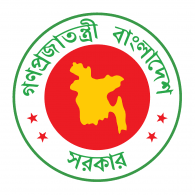Last Updated: 2019-05-06 11:13:51
Bangladesh is going through significant social and demographic changes, including rapid urbanization (at an estimated rate of 6%), expanding industrialization, rising incomes and increase in non-communicable diseases. At present about 27% people of Bangladesh lives in urban areas. Population growth in urban areas is 2.5% whereas the national population growth rate is less than 1.4%. The biggest city, Dhaka alone accounts for 40% urban population. The other five divisional cities account for 29%, while 309 municipality towns have 31% urban population. Rapid influx of migrants and increased numbers of people living in urban slums in large cities are creating continuous pressure on urban health care service. Urban health services are the responsibility of the Ministry of Local Government, Rural Development and Cooperatives (MOLGRDC). The Municipal Administration Ordinance of 1960, the Paurashava Ordinance of 1977, the City Corporation Ordinance of 1983 and the Local Government (Powroshova) Act 2009, clearly assigned the provision of preventive health and of limited curative care as a responsibility of the city corporations and municipalities. But due to their limited resources and manpower, public-sector health services have not kept up with needs. Private health care providers are the main source for delivery of curative care, including tertiary and specialized services to the urban people, but private providers seldom provide preventive and promotional health services. On the other hand, MOHFW is tasked with setting technical standards, packaging services, strategies and policies of the country’s health sector. The urban areas provide a contrasting picture of availability of different facilities and services for secondary and tertiary level health care, while primary health care facilities and services for the urban population at large and the urban poor in particular are inadequate. With the implementation of two urban primary health care projects (UPHCPs) since 1998, services have been delivered by the city corporations and municipalities through contracted NGOs under MOLGRDC in the projects areas. The project provides free services to 22% (as per household survey 2007) of the total population of the project areas. Non-project urban areas are being covered by the health facilities of MOHFW. In total, there are around 4000 satellite centers to reach the urban poor. Moreover, 35 urban dispensaries under the DGHS are providing outdoor patient services including EPI and maternal and child health (MCH) to the urban population. These urban dispensaries will be equipped with necessary facilities to use as the outlet centers of the tertiary hospitals. Various NGOs provide essential services as well some special services (52 HIV/AIDS clinics) through 158 PHC centers, 34 comprehensive centers, 56 DOTS center, 47 VCT centers. In conclusion, the various urban primary health care services are largely inadequate in view of the needs of the fast growing urban population. There is need to establish a permanent coordination structure between the two Ministries to take up the mutual mandated responsibility on a sustained and effective manner. MOHFW will join in tackling this challenge through a consultative process with MOLGRDC, city corporations and concerned stakeholders to jointly assess, map, project and plan HPN services in urban areas. The emphasis on urban health will be a new (and very different) element compared to HPSP and HNPSP. It will involve MOHFW working in new ways with its partners, notably MOLGRDC, NGOs and others. The UPHCP of MOLGRDC and NGOs have a wealth of experience in providing urban primary health care (UPHC) services through contracted NGOs. There have been impressive successes in terms of coverage, monitored quality of services and monitored exemption schemes for the poorest. These will continue, but side by side MOHFW will seek to extend the coverage of PHC services in urban areas not covered by the UPHCP. Services in the urban dispensaries under the DGHS will be improved by introducing an effective referral system in the facilities, so that the population will receive better services. MOHFW also provides health services through secondary and tertiary hospitals that will continue to be strengthened in terms of coverage, quality and equity of service delivery in response to demand.

